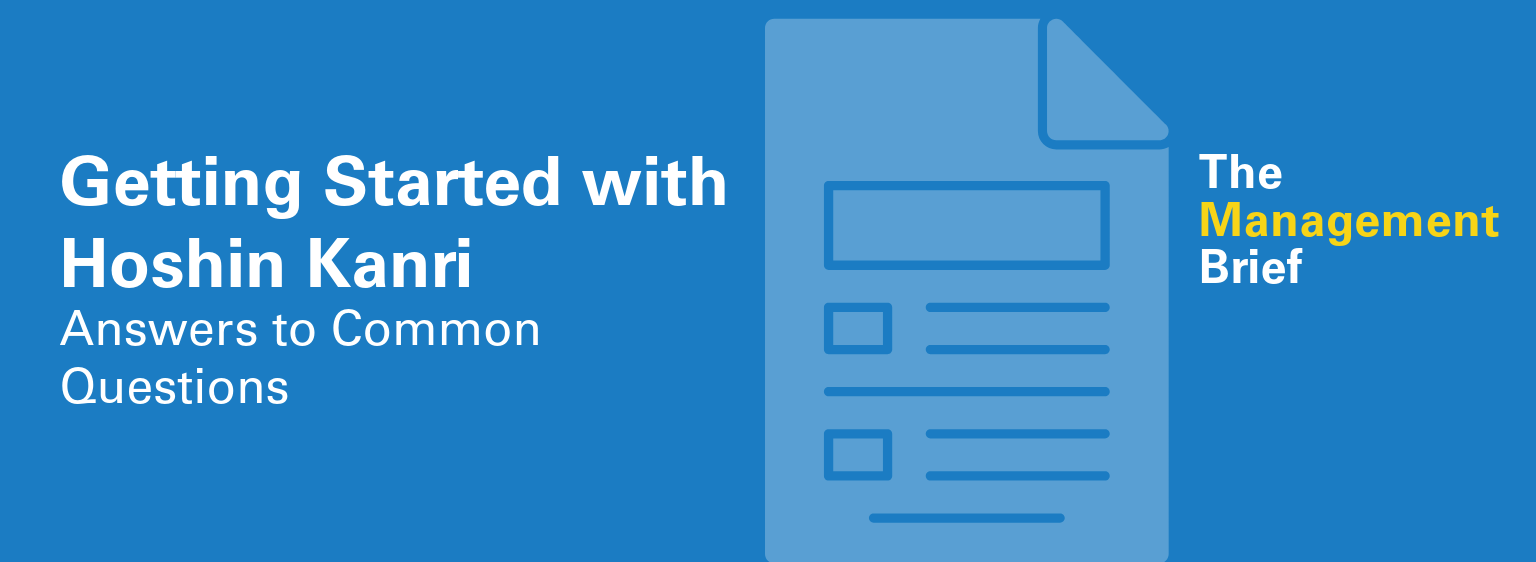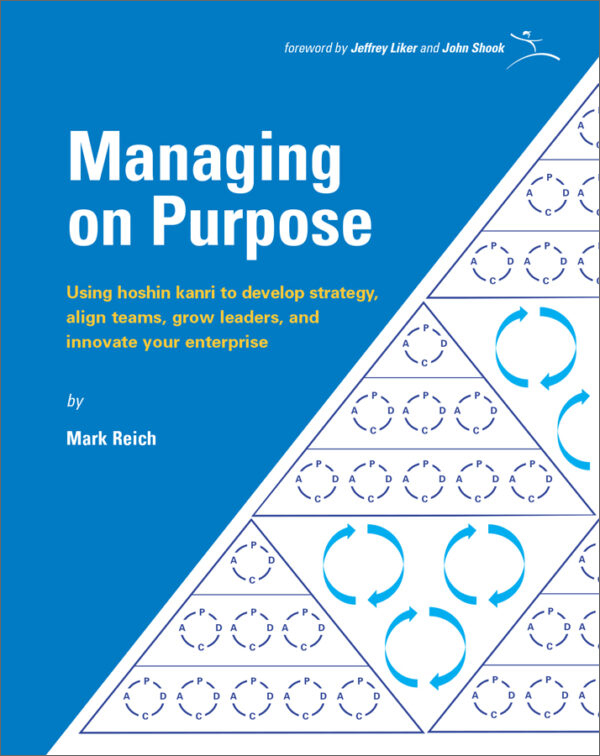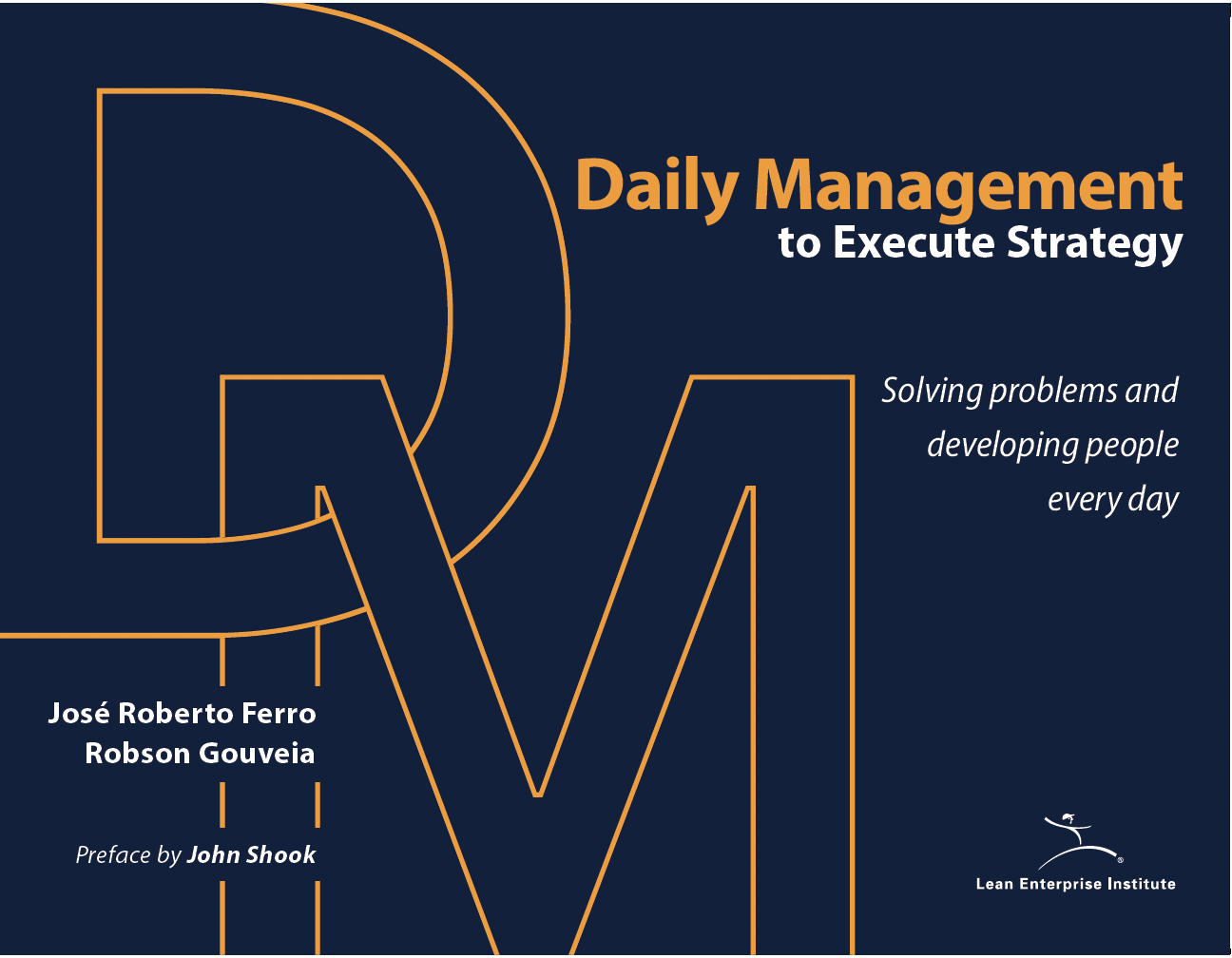The Management Brief is a weekly newsletter from the Lean Enterprise Institute that bridges the gap between theory and practice in lean management. Designed for leaders focused on long-term success, it delivers actionable insights, expert perspectives, and stories from real-world practitioners. Each edition explores the principles of lean management—strategy deployment (hoshin kanri), operational stability and continuous improvement (daily management), and problem-solving (A3)—while highlighting the critical role of leadership. Subscribe to join a growing community of leaders dedicated to creating organizations built for sustained excellence.
Hoshin kanri, if implemented effectively, requires some fundamental changes in an organization that go way beyond implementing a set of tools. It requires a rethinking of how the organization functions and aligns and how leaders behave. So it should be no surprise that there isn’t a simple, one-step guide. But there are certain factors to consider as you get started:
My company is small. Will hoshin kanri still work for me?
Absolutely, but it may look a little different given the size of the company.
Hoshin kanri is a process to break down walls within organizations and build a robust management structure to align both vertically and horizontally. This is especially effective for medium- to large-size companies that have established organizations to build functional expertise—product development experts, human resource experts, finance experts, and so on—while corporate goals and objectives generally remain broad and require support from all those disparate functions across the organization.
Smaller organizations can have silos, too. But the reality is that in smaller organizations, executives often play multifunctional roles. For example, we worked with a small furniture manufacturer’s executive team that consisted of five people who wore multiple hats (e.g., the director of production also oversaw product development). As such, functions may naturally be more aligned. In smaller organizations, a companywide hoshin is often appropriate (assuming other factors listed below are in place).
Should I start across the whole company?
A model-line approach is suggested when starting the hoshin kanri process, especially for medium- to large-size companies. Rather than starting out by attempting to improve a whole company, pick one plant where you can demonstrate quick improvements to productivity, capability, and delivery to the customer. It’s what we call an “inch-wide, mile-deep” approach.
Hoshin kanri is a big undertaking in an organization, so you probably need more than an inch, but the analogy still applies. Start with a pilot area where you can learn. Hoshin kanri defines the strategy development and execution of the company, so you don’t want to fail big. Try this in one division, function, or plant. This also allows you to learn from the pilot and improve as you go.
Does leadership need to be engaged for this to work?
This might be the most common question, often asked by continuous-improvement folks and middle-tier leaders, but also from CEOs themselves. The answer is not what people want to hear: It won’t work without leader engagement. In the model-line approach, if you have engaged the area leader or plant manager, you can demonstrate some quick business results, which then can help get the attention and engagement of higher-level leaders.
Hoshin kanri is a strategic initiative for the company, and, as such, it’s explicitly one of the primary jobs of the leader(s). So without the leader’s engagement, understanding, and proactive support and leadership, how can it succeed? Functions focused on improvement (e.g., Continuous Improvement group) provide powerful benefits, but this is not their job. They can certainly support leaders, but they can’t supplant them.
Hoshin kanri requires leaders to behave differently, and this will cause some resistance (“I’ve succeeded so far behaving as I have in my career, why do I need to change?”). At a fairly large public company, we ran across one leader whose successful career was achieved by always bulldozing over others’ points of view and leveraging his direction. This doesn’t work with hoshin kanri, where we need to build alignment across the organization. In this instance, the CEO had to intervene—repeatedly—until the alpha leader saw that hoshin kanri was the new way and wasn’t going away. If the CEO had not been involved and taken this leadership position, hoshin kanri would have failed.
What if the CEO doesn’t get it?
Well, that’s not the end of the world. CEOs are busy people—their attention may be in any number of places right now. If you’re trying this without a CEO on board, using the model-line approach and picking an area where the area leader is supportive and gets it can help. Hoshin kanri is designed to deliver sustainable results, and those will emerge. Other leaders in your organization eventually will pay attention, including the CEO.
Hoshin kanri at one multibillion-dollar manufacturer was led by the COO of North America, even though the parent company in Italy didn’t get it. However, the North American leader with whom we worked had the credibility and respect of the entire organization, was right for the task, and knew he could improve the business if he used hoshin kanri, so he just went ahead and tried.
Of course, given the high-profile nature and stakes with hoshin kanri, taking this on without the CEO’s blessing does pose some risks. And if you are a small company, the rogue approach won’t work. The president/CEO has to lead.
Can I do this in my industry?
Everyone believes their industry is unique. Sure, some of the methodologies and tools of lean apply differently in different industries. But in most industries—manufacturing, healthcare, restaurants, construction, and on and on—the methodologies apply. And, particularly with hoshin, the need for a strategy to do something—anything—is universal.
Executives from every industry and geography struggle with the same issues. But with that said, there may be unique challenges in your industry. Let’s look at healthcare, for example. Different stakeholders have unique sets of powers—administration/management, the doctors, the nurses. For hoshin kanri to be successful, all three sets of stakeholders have to be in alignment. This can be somewhat different than a traditional organization where one person is firmly in charge.
Many companies in many industries have had success with hoshin kanri, and I think it’s less a factor of the industry than of the leadership and the ability to gain alignment across key stakeholders, which can be a challenge in any organization.
Is this the right timing for my company?
This is an important, critical question to ask yourself. One purpose of hoshin kanri is to bring stability and sustainability to your company’s continuous improvement efforts. Hoshin kanri can help you determine if you’re working on the right things and build a robust, standardized management system to build sustainability.
But this system takes some time to align and embed capabilities in the organization. As mentioned in the previous chapter when we were discussing enablers, it does work better when an organization is stable: not in excessive turnover (particularly around the top management ranks) and not in a period when the company is struggling to stay out of bankruptcy.
Hoshin kanri can be quite effective, however, in a situation where there is a pressing business need. The case study company in Managing on Purpose, TrueMowers, is a company in such a situation. The leadership has a long-term vision, but the company is encountering many headwinds related to profitability, quality, and employee retention. Hoshin kanri can help with all of that. It also can be effective when organizational stability should be a corporate objective.
The reality is there is never a perfect timing, and there are always good excuses to delay—new software platform being implemented, new products being introduced, and many others. Just get started—all this time suck from these endless projects will dissipate, and the team will be much more focused.
How much of our past planning applies to our future hoshin?
You should start with self-reflection of what was planned and achieved in the past. As a leader, what could you have done differently? Engage the organization in this exercise; people at the leadership level will have different perspectives than those closer to the work. And have these discussions based on facts—meaning: What actually happened? What was planned? Don’t make this an airing of grievances.
This is an excerpt from Managing on Purpose by Mark Reich, a book coming March 2025 from the Lean Enterprise Institute. It is a practical guide to implementing hoshin kanri in your organization. Managing on Purpose explains how to align an entire organization around a strategy —horizontally across departments and vertically from the C-suite to the frontline— and build a management system that ensures achievement of breakthrough goals.
Managing on Purpose with Hoshin Kanri
Learn how to develop strategy and build alignment.





Looking forward to purchasing the book: Managing with Purpose. I feel it is going to be very beneficial to our journey of continuous improvement.